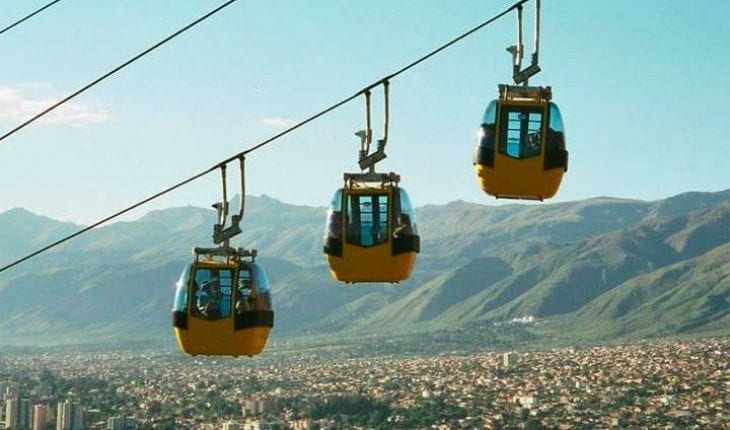Contenido de Peruvian Airlines
Peru’s first-ever cable car system, inaugurated in Kuélap (Chachapoyas province), made a big impression with its sophistication, modern design, and beauty. But according to Eduardo Ferreyros, then Minister of Foreign Trade and Tourism, the expansion won’t stop there—new cable car systems are coming to Lima and Choquequirao.
The Kuélap cable car now saves visitors three hours on foot and one hour by vehicle, making it easier to access this stunning historical site and boosting tourism in the Amazonas region.
Traveling to these Amazon destinations from Lima usually takes nearly a full day. This new infrastructure is expected to transform the region, increasing employment, boosting national development, and putting Peru at the forefront of tourism tech in South America.
After this announcement, Ferreyros responded to a series of key questions about the project:
Will this project really quadruple the number of visitors to Kuélap?
Ferreyros: That’s the goal. The Ministry of Culture is working hard to prepare for it. But this effort goes beyond Kuélap—it also aims to highlight nearby archaeological attractions like the Karajía Sarcophagi, Laguna de los Cóndores, and Gocta Waterfall, among others.
Is the current hotel infrastructure ready?
Ferreyros: Not quite. Hotels in Chachapoyas will need to improve their facilities to meet growing demand. The private sector will need to take the lead on this.
Is there a daily visitor cap for Kuélap?
Ferreyros: There isn’t a set number yet, but we expect to exceed 80,000 visitors per year. As demand grows, we’ll adjust capacity accordingly.
What about accessibility to other sites, like Karajía?
Ferreyros: That’s part of the ongoing plan. First, we’re finishing the cable cars and inspecting the main infrastructure. Then we’ll invest in the surrounding area—starting with the town of Tingo.
Under the COPESCO Plan, the government is also developing roads, churches, restaurants, public squares, homes, and potable water systems. It’s a truly integrated development strategy.
What about the district of María, once a key route to Kuélap?
Ferreyros: Honestly, there’s been no official or community intervention there recently. I’m not familiar with the past project, but I’ll look into it and take action if necessary.
The cable car idea was first proposed under the Fujimori administration. Will this government build more?
Ferreyros: It’s true—the Fujimori administration initiated this vision, and they deserve credit for that. But this specific project has been in development since 2006, and the government of Pedro Pablo Kuczynski proudly brought it to life. That’s how governments work—one administration continues the work of the last.
As for building more cable cars—yes. Over the past six months, we’ve worked closely with the company to secure the necessary licenses, and we’re moving forward with more projects.
Kuélap is Peru’s first, but Lima and Choquequirao are next.
Where exactly in Lima?
Ferreyros (laughing): I can’t say just yet—it might cause a stir. But I promise it’s going to be beautiful and highly functional.
Will it be completed during this government’s term?
Ferreyros: Absolutely. Lima’s project will be simpler than Choquequirao’s, but both will be completed as soon as possible.
All of this aims to promote and expand Peru’s incredible tourism potential.



